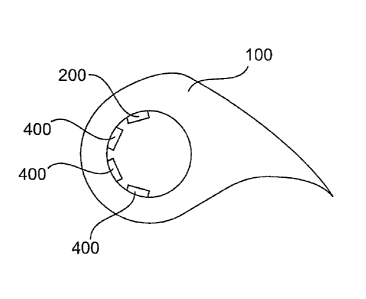Some of the information on this Web page has been provided by external sources. The Government of Canada is not responsible for the accuracy, reliability or currency of the information supplied by external sources. Users wishing to rely upon this information should consult directly with the source of the information. Content provided by external sources is not subject to official languages, privacy and accessibility requirements.
Any discrepancies in the text and image of the Claims and Abstract are due to differing posting times. Text of the Claims and Abstract are posted:
| (12) Patent: | (11) CA 2813659 |
|---|---|
| (54) English Title: | ROTOR BLADE WITH HEATING DEVICE FOR A WIND TURBINE |
| (54) French Title: | PALE DE ROTOR A DISPOSITIF CHAUFFANT POUR UNE EOLIENNE |
| Status: | Deemed expired |
| (51) International Patent Classification (IPC): |
|
|---|---|
| (72) Inventors : |
|
| (73) Owners : |
|
| (71) Applicants : |
|
| (74) Agent: | OYEN WIGGS GREEN & MUTALA LLP |
| (74) Associate agent: | |
| (45) Issued: | 2016-06-21 |
| (86) PCT Filing Date: | 2011-10-31 |
| (87) Open to Public Inspection: | 2012-05-10 |
| Examination requested: | 2013-04-04 |
| Availability of licence: | N/A |
| (25) Language of filing: | English |
| Patent Cooperation Treaty (PCT): | Yes |
|---|---|
| (86) PCT Filing Number: | PCT/EP2011/069120 |
| (87) International Publication Number: | WO2012/059466 |
| (85) National Entry: | 2013-04-04 |
| (30) Application Priority Data: | ||||||
|---|---|---|---|---|---|---|
|
There is provided a wind power installation rotor blade comprising at
least one electrically operable heating mat (400) which is fixed in the
interior (200) of the rotor blade (100).
L'invention concerne une pale de rotor d'éolienne comprenant au moins un mat chauffant (400) fonctionnant électriquement, fixé dans la partie intérieure (200) de la pale de rotor (100).
Note: Claims are shown in the official language in which they were submitted.
Note: Descriptions are shown in the official language in which they were submitted.

For a clearer understanding of the status of the application/patent presented on this page, the site Disclaimer , as well as the definitions for Patent , Administrative Status , Maintenance Fee and Payment History should be consulted.
| Title | Date |
|---|---|
| Forecasted Issue Date | 2016-06-21 |
| (86) PCT Filing Date | 2011-10-31 |
| (87) PCT Publication Date | 2012-05-10 |
| (85) National Entry | 2013-04-04 |
| Examination Requested | 2013-04-04 |
| (45) Issued | 2016-06-21 |
| Deemed Expired | 2020-11-02 |
There is no abandonment history.
| Fee Type | Anniversary Year | Due Date | Amount Paid | Paid Date |
|---|---|---|---|---|
| Request for Examination | $800.00 | 2013-04-04 | ||
| Application Fee | $400.00 | 2013-04-04 | ||
| Maintenance Fee - Application - New Act | 2 | 2013-10-31 | $100.00 | 2013-04-04 |
| Maintenance Fee - Application - New Act | 3 | 2014-10-31 | $100.00 | 2014-09-10 |
| Registration of a document - section 124 | $100.00 | 2015-01-12 | ||
| Registration of a document - section 124 | $100.00 | 2015-01-12 | ||
| Maintenance Fee - Application - New Act | 4 | 2015-11-02 | $100.00 | 2015-09-04 |
| Final Fee | $300.00 | 2016-03-30 | ||
| Maintenance Fee - Patent - New Act | 5 | 2016-10-31 | $200.00 | 2016-09-13 |
| Maintenance Fee - Patent - New Act | 6 | 2017-10-31 | $200.00 | 2017-10-18 |
| Maintenance Fee - Patent - New Act | 7 | 2018-10-31 | $200.00 | 2018-10-18 |
| Maintenance Fee - Patent - New Act | 8 | 2019-10-31 | $200.00 | 2019-10-17 |
Note: Records showing the ownership history in alphabetical order.
| Current Owners on Record |
|---|
| WOBBEN PROPERTIES GMBH |
| Past Owners on Record |
|---|
| None |